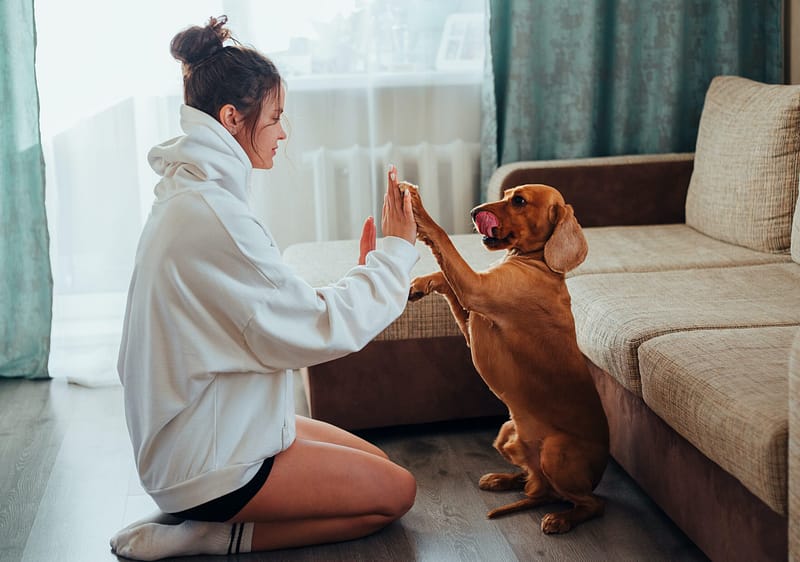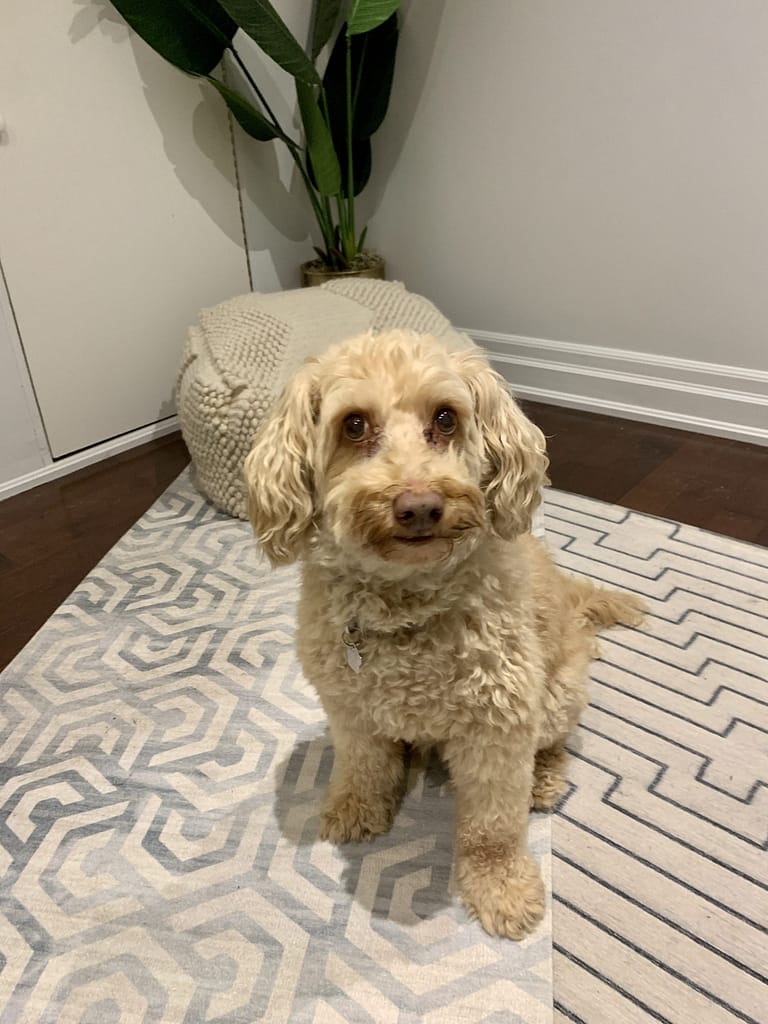You know you have a bored dog when you are constantly dealing with destructive behavior and hyperactivity from your dog day in and day out. It has been proven time and again in various behavioral studies that the quality and quantity of play are good indicators of a dog’s quality of life. On some days, you may not be able to get out as much as you’d ideally like to. Even during such times, there are plenty of things you can do at home to help keep your dog stimulated and entertained. Read on…

How much exercise does your dog really need?
Knowing your dog’s energy levels and exercise requirements is one of the major pre-requisites of being a responsible pet parent. As repetitive as it may sound, every dog has unique needs.
Your pup’s exercise requirements are highly dependent on factors like…
- Their breed – A Labrador’s exercise needs are vastly different from a Maltese. Your dog’s original breeding purpose is an inherent part of their natural instinct and is a major deciding factor in the amount of exercise they need on a daily basis.
- Their age – A 20-week-old Belgian Malinois puppy’s energy levels and exercise requirements are much different than a 6-year-old Malinois.
- Their lifestyle – The lifestyle of a dog is directly dictated by the household and the environment they are being raised in. If a dog is being raised by a family that loves going for frequent outdoor excursions like hikes, swims, trails etc with the dog, their additional daily exercise needs may be far less compared to a dog that leads a more sedentary lifestyle.
- Their health conditions – If your dog is dealing with health issues like hip and joint problems, their exercise needs and willingness may greatly reduce.
8 tips to keep your dog engaged indoors...
- Ditch the food bowl
Meals are a huge part of a dog’s life. Some of them live for it! Traditional food bowls make it way too easy for dogs to eat. Furthermore, if food is always readily available to dogs, they are likely to lose respect and value for it.
Consider adopting new and unique ways to feed your dog such as –
- Frozen feeders
- Meals filled in Classic Kong toys
- Scatter feeding
- “Find it” games
- Snuffle mats, etc
These methods of feeding will ensure that your dog is physically and mentally stimulated and getting fed at the same time.
- Interactive games, toys and puzzles
As much as we’d like it, it is not humanly possible to spend every waking minute of the day with our dogs. But it can be difficult to explain this to our dogs, especially when they are bored and looking for things to do.
Interactive toys like treat dispensers, puzzle toys, Wobblers etc. are a great starting point for teaching your dog the art of self engagement. The also make great companions for dogs inside the crate or the playpen and help in preventing behavioral issues stemming from boredom.
Pet parents have a variety of options available in the market in terms of mental enrichment toys. Several toys come with different levels of difficulty. You can choose your level depending on how well versed your dog is with such puzzles. Make sure to start at an easy level. This will motivate your dog to continue playing with the toy for a longer time.
- Doggy playdate
If your dog is a social butterfly and enjoys spending time with other dogs, organize a doggy playdate in your house or your backyard. The pre-requisite for organizing a doggy playdate is that all the dogs involved must be comfortable around each other.
Make sure to take a lot of breaks in between and incorporate activities that intermittently encourage the dogs to calm down and focus. This will help you ensure that the dogs are not getting overstimulated and promotes healthy socialization. A playdate done right even for a couple of hours can tire your dog out for the rest of the day.
- Teach a new trick
Learning tricks is not an essential part of obedience training, but it is a great way to engage your dog in mental and physical enrichment. Even a simple trick like shaking paw or roll over can greatly improve your dog’s cognitive skills and ability to communicate with you.
Trick training is one of the most cost effective, yet best ways to keep a dog engaged indoors. All you need is a bag of your dog’s favorite treats and a little bit of time and willingness from your end to make your dog a social media star! After all, a dog performing tricks in front of the camera never gets old.
- Long lasting edible chews
Bully sticks, Yak chews, raw meaty bones, collagen sticks are some of the safest, single ingredient chews that are safe and healthy for dogs of all ages and size. The best part about these chews is their ability to last long while cleaning your dog’s teeth!
Make sure to always supervise your dog while they are gnawing on these chews to prevent choking hazards.
- Teach your dog to help with chores
A dog is known to be a man’s best friend for innumerable reasons; one of the most important ones being their undying willingness to help in whatever way they can. If your dog has a tendency to follow you from room to room and an inclination to be a part of everything you are doing, why not teach them to actually do something to help?
Simple things like putting clothes in the laundry basket, fetching a bottle of water, turning the light switch on and off, closing the door etc are excellent ways to make your dog feel included while making sure they are engaged in productive tasks at home.
- Toy rotation
Pet parents are not oblivious to the speed at which dogs get bored of their toys; especially the expensive ones! A good idea is to rotate your dog’s toys so that only a handful of toys are available to your dog to play at a given point in time. Once you run out of ideas to engage your dog with the available toys, you can bring the new batch out.
Toy rotation helps retain newness and engagement for a longer time.
- Do nothing!
Keeping your dog engaged inside the house is important to prevent boredom and destructive behavior; however, is equally crucial to teach your dog to do nothing, especially after they have received ample exercise during the day.
Schedule several minutes of downtime during the day where your dog has to learn to settle down and rest. Doing so helps retain information acquired during the day better, prevent overstimulation and promotes better mental health and well being.
Keeping a dog engaged indoors is all about striking a balance between ample play and rest. Bored dogs get into trouble and accidents. While we have a life apart from them, we are basically their entire lives and they are completely dependent on us for engagement and enrichment. If we do not give them enough outlets to have fun, they will end up creating their own outlets and that is when we end up with chewed up furniture corners and walls.











